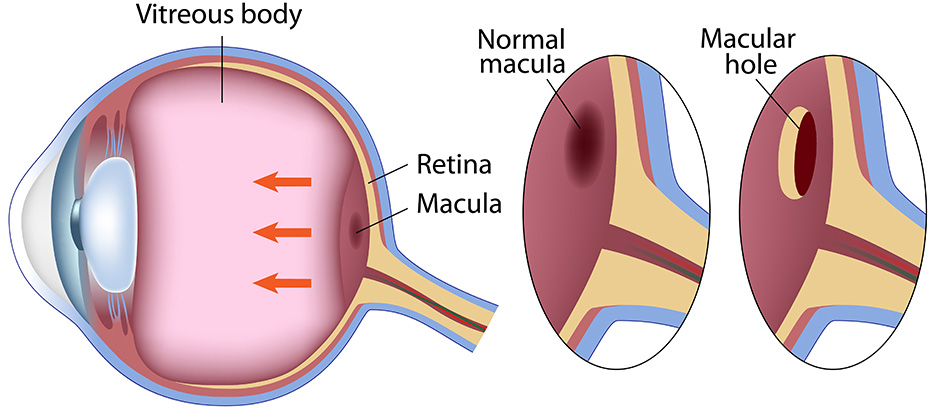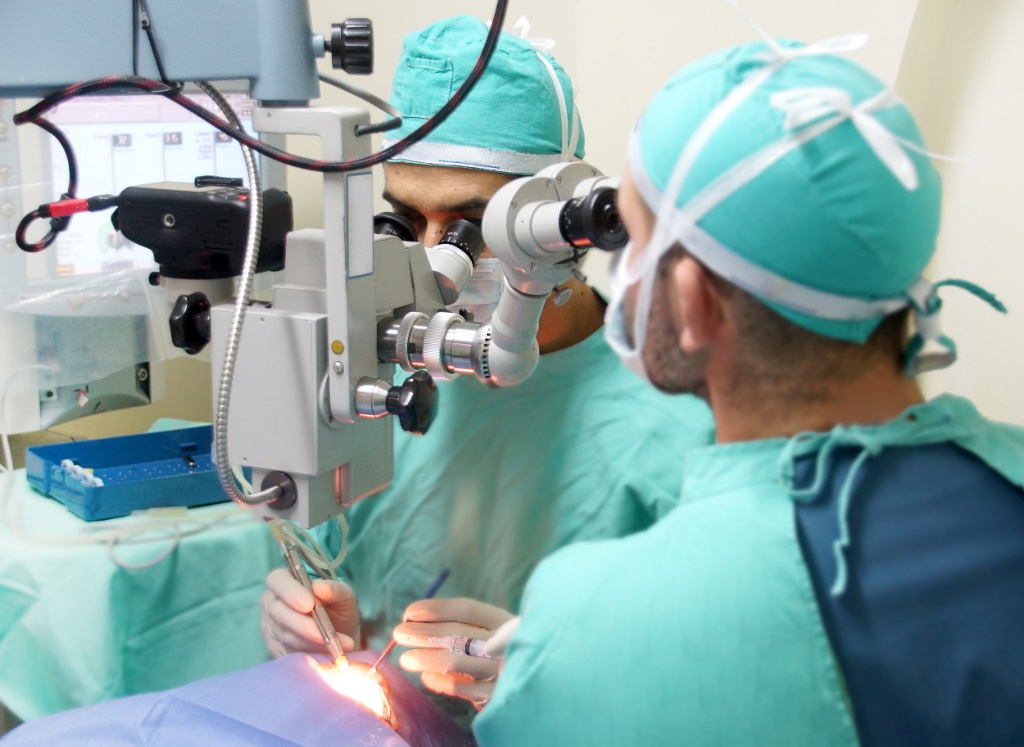Macular Hole Surgery

Macular Hole Surgery
What is Macular Hole Surgery?
Causes and Risk Factors

Causes and Risk Factors
Macular holes can develop due to various factors, such as:
- Age-related changes in the vitreous humor
- Trauma or injury to the eye
- High levels of myopia (nearsightedness)
- Certain retinal disorders
- Pre-existing eye conditions
While macular holes can affect individuals of all ages, they are more commonly seen in older adults.
Symptoms of Macular Hole
Macular holes typically develop gradually. In the initial phase of a macular hole, individuals may notice a subtle distortion or haziness in their central vision. Straight lines or objects may begin to appear curved or wavy, making tasks like reading and everyday activities challenging when using the affected eye.
The development of a macular hole may be accompanied by the following symptoms:
- Central vision distortion
- Blurred or cloudy central vision
- Reduced color perception
- Difficulty reading or recognizing faces
- Dark spots or a black hole in the center of your vision
Symptoms of Macular Hole

Treatment

Treatment
The sole effective treatment for a macular hole is surgical intervention; eye drops or glasses are not effective.
During the surgery, the surgeon will address the macular hole by eliminating any tension around it and introducing a gas bubble into the eye at the conclusion of the procedure. You might be instructed to maintain a specific head position for several days following the surgery.
The surgery is typically highly successful in mending and sealing the hole, and visual recovery is expected, although the extent of recovery may be influenced by the duration the hole has been present. It is advisable to schedule macular hole repair as soon as it’s diagnosed after a thorough discussion with your surgeon.
